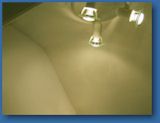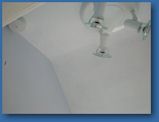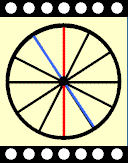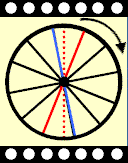| Natural
light
The primary light source that man has relied on for thousands of years is the sun. It is only relatively recently in evolutionary terms that we have developed light sources based on fire, such as candles and gaslights, and more recently still sources run by electricity.
Therefore, it is reasonable to suppose that our eyes have developed with the expectation that vision will be provided by natural light, which contains all wavelengths in roughly the same proportion. There is speculation, but little evidence, to say that our bodies need the full complement of wavelengths in order to function optimally, and that by working or living under artificial lights we are somehow causing ourselves damage. Probably more important than the spectral composition of the light is the variation in light levels over the
24 hours of the day, for two reasons. First, our bodies have natural rhythms, and these are thought to be
'tuned' to, or controlled by, the day-night cycle. Second, we appear to have a biological need for
light - in Scandinavia (where the winter days are very short and the winter nights very long) the depression rate is much higher in the winter than in the summer.
Artificial
light
There are two main types of lamp used to provide interior lighting. The first of these is the
incandescent light - the traditional 'light-bulb' - which consists of a thin piece of wire (a
filament) sealed into a glass case along with a special gas. When electricity passes through the wire it glows, giving off light and
infrared radiation (which we feel as heat). The second type is a fluorescent tube, which is again a glass tube filled with gas. This tube has two electrodes, one at either end, and as electrons fly from one end to the other they excite the gas which then gives off electromagnetic energy. Some of this energy is in the form of visible light, some of it is invisible. The name of the tube comes about because they have a fluorescent coating on the inside which absorbs this invisible radiation, and then emits radiation in the form of light.
Colour
rendering properties
There are two main areas where there are differences between the light produced by these three light sources, the sun, the incandescent lamp and the fluorescent tube. The first is in the relative amounts of radiation that each emits. The sun emits roughly equally across the visible spectrum, the lamp emits more radiation the higher the wavelength, and the fluorescent tube emits unevenly across the spectrum. It is worth mentioning one further lamp here, the sodium
street-lamp, because these are often monochromatic,
that is they only emit light at a single wavelength, sodium yellow.
Because of the different spectral compositions of the sources, colours
of things that we look at under each source can appear different.
This is worth remembering when performing any colour-critical task, such as choosing
clothes or doing inspection work. Have you noticed that under
sodium street-lamps everything looks a dim shade of yellow and
no other colours are visible?
The following two photographs
were taken of the same bathroom interior walls and ceiling. In
the first picture the room is lit only by artificial halogen lamps, and there is little difference seen
in the colour of the walls and the ceiling. In the second, the room is lit by daylight, which has a broader spectrum and provides better colour rendering, and the colour difference between the wall and ceiling is quite apparent.
 
Time
properties
When a light is flashed at a slow rate,
10 or 20 times per second, it appears to flicker. As the flash rate increases the flickering appearance
decreases, until eventually the light appears to be steady. Both the sun and an incandescent lamp
produce light which is essentially uniform, whereas the amount of light produced by a fluorescent tube (like that produced by a television or a VDU) varies rapidly. Usually the frequency of this flicker is so fast that
the eye can't follow it, and the light appears to be steady. When a tube gets old, however, it may produce some slower flicker and this can often be seen by eye.
As well as affecting the eye, a flickering lamp can alter the appearance of an object that the eye is viewing. A similar effect can be seen in television or films where a wheel
(for example, a wagon wheel in a western) appears to stop moving, or even go backwards. This happens because the camera does not make a continuous record of the scene, but takes a number of pictures in rapid succession. Because each is similar to the previous picture, and they are shown in quick succession, the eye sees the film as continuous movement.
The following
pictures show two successive frames of a cinema
film. The wheel has rotated clockwise between frames, and the
red and blue spokes have moved round ('forward'). In the second
frame, the original position of the red spoke is shown as a dashed line, and
you can see that the blue spoke is closer to this than the solid
red spoke. Your eye sees this (blue) spoke as if it were the original
(red) spoke. Therefore, it appears that the wheel has moved
anti-clockwise (backwards) rather than clockwise (forwards).
This will only happen if the wheel moves round at less than one
spoke-distance between successive frames.
 
|